Last Updated on 3 months
Unlocking the Advantages of Asymmetrical Tires for Diverse Driving Needs
Striving to balance multiple demands, tire engineers have created Asymmetrical Tires, the multitaskers of the tire world. These versatile tires have a unique design, serving different functions with distinct inner and outer tread patterns, enhancing overall tire performance for diverse driving conditions. With the versatility of Asymmetrical Tires, drivers can experience superior handling and traction on wet and dry roads, making them a reliable and adaptable choice in today’s tire market.
Key Takeaways
- Asymmetrical Tires offer a unique tire design for enhanced performance
- These tires have distinct inner and outer tread patterns for wet and dry conditions
- Designed for versatility and superior handling
- Perfect for all-weather driving conditions
- Ensure proper installation and rotation for optimal performance and tread life.
- Top-rated options available for a variety of vehicles and driving needs
The Unique Design and Function of Asymmetrical Tires
Asymmetrical tire design is synonymous with innovation in the world of tires. By featuring independent tread patterns on a single tire, this unique design precisely caters to the different demands that drivers might face on roads. The asymmetrical design combines superior handling, response, and optimum performance by addressing varied driving conditions.
The Asymmetrical Tire Design can be divided into two specific sections: the inner portion, which plays a vital role in achieving Wet Traction, and the outer portion, specially designed to provide excellent Dry Grip. When these two components work harmoniously, the tire delivers optimal handling and response.
Asymmetrical tires have independent tread patterns, enhancing their handling and response across different driving conditions.
- Inner Portion: The inner section of the tire is designed to tackle wet roads, thanks to a series of grooves and sipes that help channel water away from the tire, enhancing wet traction and handling altogether. This design allows drivers to maintain control even in rainy or slippery conditions.
- Outer Portion: The outer section of the tire focuses on grip on dry surfaces and cornering stability. Large tread blocks and a continuous contact rib facilitate improved dry grip and offer a more stable, responsive feel while driving.
With its strategic positioning, the asymmetrical tire design optimizes performance across various conditions. Below is a table that simplifies the tire’s unique configuration:
| Portion | Function |
|---|---|
| Inner (Wet Traction) | Grooves and sipes for effective water evacuation, improved handling, and reduced risk of hydroplaning |
| Outer (Dry Grip) | Large tread blocks and continuous contact rib for maximum grip on dry surfaces, cornering stability, and steering response |
By incorporating this intelligent mix of Independent Tread Patterns in a single tire, asymmetrical designs achieve the elusive balance of performance and safety across diverse road conditions. Whether navigating dry streets or facing wet weather, asymmetrical tires ensure reliable handling and response in every scenario.
The Advantages of Asymmetrical Tire Technology
Asymmetrical tire technology offers balanced performance on wet and dry surfaces, catering to motorists who require dependable all-season tires. These multi-function tires combine enhanced traction and superior handling to deliver an all-in-one solution for drivers seeking safety and performance.
These tires’ inner tread designs reduce the risk of hydroplaning, while their outer treads bolster stability and precise steering response. They bridge the gap between wet braking and dry acceleration grip, providing a top-choice, multifunctional solution for drivers seeking safety and performance.
Asymmetrical tire technology gives drivers the peace of mind of being prepared for various road conditions, ensuring a smooth and safe driving experience.
Some notable advantages of asymmetrical tire technology include:
- Enhanced Traction: The inner tread designs provide excellent wet grip and minimize the risk of hydroplaning, allowing for safer performance during wet conditions.
- Superior Handling: With a dedicated tread pattern for dry grip, asymmetrical tires offer stable cornering and precise steering response on dry roads.
- Multi-Function Design: Asymmetrical tires provide a versatile solution for various driving conditions by tackling wet and dry tire performance, making them an excellent option for all-season use.
Motorists who opt for asymmetrical tires can expect balanced performance and enhanced road safety, providing the best of both worlds for an enjoyable driving experience.
Asymmetrical Tires for All-Season Use: A Year-Round Solution
Asymmetrical tires are designed to provide reliable performance throughout the year, making them ideal for drivers seeking a year-round tire solution. These tires boast inner treads that help reduce hydroplaning in wet conditions and outer impressions, ensuring improved grip and stability on dry roads. With their ability to adapt to different driving environments, all-season asymmetrical tires provide an excellent solution for many motorists.
Superior Performance in Wet Conditions
To ensure safety during rainy seasons or on damp roads, the inner tread design of wet-performance tires plays a crucial role in reducing hydroplaning. These tires feature unique asymmetrical treads that effectively channel water away and offer excellent water evacuation capabilities for a solid grip on wet surfaces. As a result, drivers can experience enhanced safety and vehicle stability when navigating wet conditions.
Reliable Grip and Cornering on Dry Roads
Asymmetrical tires are equally well-suited for dry road conditions, thanks to their distinct outer tread pattern that promotes good grip and cornering stability. The larger block designs provide efficient dry traction and reduce outer shoulder heat buildup, leading to heightened vehicle stability and precise steering response. As such, these tires are ideal for motorists who require reliable performance on both wet and dry roads.
“All-season asymmetrical tires offer a versatile solution for drivers seeking year-round performance.” – Expert Tire Reviewer
- Key features:
- Reduced Hydroplaning
- Asymmetrical Treads for Dry Grip
- Cornering Stability Tires
- Wet and Dry Performance
In conclusion, all-season asymmetrical tires deliver excellent performance across various driving conditions, making them suitable for many drivers. Their distinct inner and outer tread patterns contribute to their exceptional capabilities in wet and dry environments, providing a practical and efficient year-round tire solution.
Installation and Mounting of Asymmetrical Tires
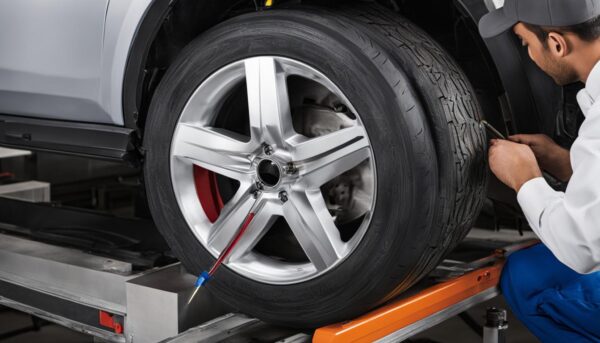
Proper installation is vital for asymmetrical tires, as each side is designed for a particular function. Mounting instructions on the sidewall guide users to ensure the appropriate side of the tire faces outward. Incorrect installation or mixing different types of tires could lead to dangerous consequences and should be avoided.
Mounting asymmetrical tires is straightforward if you follow the correct tire installation steps. The following tire mounting instructions serve as a tire installation guide for safely installing these specialized tires:
- Inspect the tire sidewall for mounting instructions and an arrow indicating the rotational direction.
- Ensure the correct side, with the label “outside,” faces outward during the installation.
- Mount the tire on the wheel rim.
- Balance the tire and wheel assembly.
- Install the tire and wheel assembly onto the vehicle.
- Secure the wheel by tightening lug nuts in a star pattern, following the vehicle manufacturer’s recommended torque specifications.
It is crucial to adhere to the tire manufacturer’s tire mounting instructions. This ensures optimal vehicle performance and safety while minimizing the risk of accidents due to incorrect tire installation.
Remember: Correctly mounting asymmetrical tires is essential for their optimal performance and your vehicle’s safety on the road.
Following this tire installation guide, you can enjoy the benefits of asymmetrical tires, such as superior traction and handling on wet and dry surfaces. In addition to adhering to proper mounting techniques, always consult a qualified tire service professional if you’re unsure about any aspect of the installation process.
| Mounting Steps | Key Points |
|---|---|
| 1. Inspect Tire Sidewall | Look for mounting instructions and rotational direction arrows. |
| 2. Ensure Correct Side Faces Outward | The side marked “outside” should be facing outward. |
| 3. Mount Tire on Wheel Rim | Align the tire’s bead with the rim’s edge. |
| 4. Balance Tire and Wheel Assembly | Balance the assembly to ensure even tire wear and smooth driving. |
| 5. Install Assembly on Vehicle | Secure the assembly to the vehicle’s hub. |
| 6. Secure the Wheel with Lug Nuts | Tighten lug nuts in a star pattern to the manufacturer’s specifications. |
The Art of Tire Rotation: Maintaining Asymmetrical Tires
Asymmetrical tire rotation is essential to proper tire maintenance, which helps extend tire tread life and preserve tire performance. To ensure the tire rotation benefits, it is essential to follow the specific patterns recommended for asymmetrical tires, which usually involve rotating the tires from front to back on the same side of the vehicle.
Maximizing Tread Life Through Proper Rotation
Maintaining a consistent rotation schedule for your asymmetrical tires can result in even wear on the treads and a prolonged tire lifespan. Here are some essential tips for effective tire rotation:
- Rotate the tires according to the manufacturer’s recommended pattern and frequency.
- Consult your vehicle’s owner manual for specific rotation guidelines.
- Keep track of tire rotations and maintenance activities with a maintenance log.
- Inspect your tires for uneven wear or damage before and after rotation.
“Adhering to the manufacturer’s recommended rotation patterns can maximize tire tread life and maintain the performance of your asymmetrical tires.”
Following these best tire rotation practices will help ensure balanced wear across your asymmetrical tires, enhancing their overall utility and longevity.
| Rotation Pattern | Benefits |
|---|---|
| Front-to-back on the same side | Maximizes tread life, maintains tire performance |
| Diagonal (cross) rotation | Not recommended for asymmetrical tires |
| Side-to-side rotation | Not recommended for asymmetrical tires |
In conclusion, proper tire maintenance, including regular tire rotation, is crucial in maximizing the tread life of asymmetrical tires. Adhering to the recommended rotation patterns will ensure optimal tire performance, safety, and durability for a more enjoyable driving experience.
Choosing the Best Asymmetrical Tires for Your Vehicle
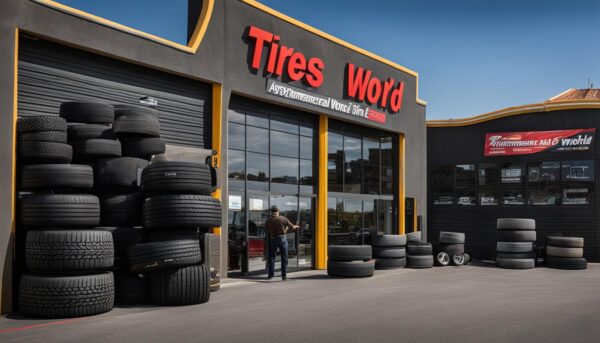
Selecting the best asymmetrical tires involves assessing your driving conditions and vehicle requirements. Sports cars, sedans, and SUVs can all benefit from the multifunctional attributes of asymmetrical tires. When choosing, drivers should consider year-round performance, handling, and the tire’s ability to adapt to wet and dry conditions.
Whether you own a sports car, sedan, or SUV, choosing asymmetrical tires that cater to your vehicle’s needs and driving conditions is essential. Below is a list of factors to consider in your selection process:
- Driving style and habits: Consider how you typically drive and the types of roads you frequently encounter.
- Weather conditions: Consider the weather patterns in your region and whether you regularly encounter wet roads or dry conditions.
- Vehicle type: Ensure the asymmetrical tires you select are compatible with your specific vehicle model and size.
- Brand reputation: Choose tires from reputable manufacturers known for their quality and performance.
- Price: Determine a budget for your tire purchase, but remember that cheaper options may not always provide the best performance and safety.
By evaluating the factors above, you’ll be better equipped to decide on the best asymmetrical tires for your vehicle.
Selecting the best asymmetrical tires involves assessing your driving conditions and vehicle requirements. Sports cars, sedans, and SUVs can all benefit from the multifunctional attributes of asymmetrical tires.
When choosing from the top-rated asymmetrical tires, it’s crucial to compare various brands and models to find the perfect fit for your needs. A comparison table showcasing some of the most popular asymmetrical tires can help you make an informed decision:
| Brand | Model | Features |
|---|---|---|
| Michelin | Pilot Sport A/S 3+ | Outstanding wet and dry grip, excellent handling, long tread life |
| Continental | ExtremeContact DWS06 | Superior all-season performance, responsive handling, reduced road noise |
| Goodyear | Eagle F1 Asymmetric 3 | Enhanced dry grip, improved wet handling, reduced rolling resistance |
| Pirelli | P Zero Nero All Season | Strong all-season capabilities, exceptional cornering stability, reduced aquaplaning. |
Ultimately, the best asymmetrical tires depend on your vehicle and individual needs. Carefully weigh the pros and cons of each option to find the perfect match that ensures safety, performance, and satisfaction on the road. Happy tire hunting!
Asymmetrical Tires for Performance Vehicles: Enhancing Your Ride
Performance vehicle owners seeking the perfect balance between style, safety, and functionality often turn to asymmetrical tires as their preferred choice. These robust tires offer a range of benefits that cater to the aesthetic and performance needs of sports cars and high-performance automobiles. In this section, we will dive deeper into the advantages that asymmetrical tires provide specifically for performance vehicles regarding cornering, braking, and visual appeal.
Cornering and Braking Advantages with Asymmetrical Tires
Asymmetrical tires are excellent for performance vehicles thanks to their superior handling and grip on dry surfaces. The tires’ unique structure enables enhanced response and control, making them ideal for sports cars and high-performance automobiles that prioritize agility and safety. The design of asymmetrical tires promotes cornering and braking stability, giving drivers increased confidence while navigating curves and decelerating.
“Asymmetrical tires provide excellent grip and cornering stability for high-performance vehicles, ensuring more precise steering and control during spirited driving.”
The Aesthetic Appeal of Asymmetrical Tire Patterns
Beyond their functional benefits, asymmetrical tires also stand out for their sporty and distinctive tread patterns. These design features offer an aesthetic appeal that complements the aggressive look of many performance vehicles. Combining performance and style, the asymmetrical tire patterns bring a sense of balance to your ride, adding flair and substance to the overall experience.
The growing popularity of asymmetrical tires among drivers who value style and performance can be attributed to their unique aesthetic appeal and balance of functionality. This makes them an excellent choice for car owners seeking stylish tires that don’t compromise safety and performance.
- Performance Vehicle Tires: Asymmetrical tires offer a perfect balance of style, safety, and functionality for performance vehicles.
- Asymmetrical Tires for Sports Cars: With superior handling, grip, and control on dry surfaces, these tires are ideal for sports cars and high-performance automobiles seeking agility and safety on the roads.
- Sporty Tire Patterns: The distinctive tread patterns of asymmetrical tires enhance the overall aesthetic appeal of performance vehicles without sacrificing function.
In conclusion, asymmetrical tires are an excellent choice for performance vehicles, offering numerous advantages in cornering, braking, and aesthetics. By choosing asymmetrical tires, sports cars and high-performance automobile owners can enjoy a perfect blend of style and functionality that complements their vehicles’ dynamic capabilities.
The Top-rated Asymmetrical Tires on the Market
When maximizing driving performance in varying weather conditions, finding the best tires on the market is crucial. As drivers explore their options, they discover numerous top-rated asymmetrical tires, all with unique features. To assist in narrowing down the top contenders, we have compiled a list of leading asymmetrical tires with outstanding tire market ratings.
- Michelin Pilot Sport PS2
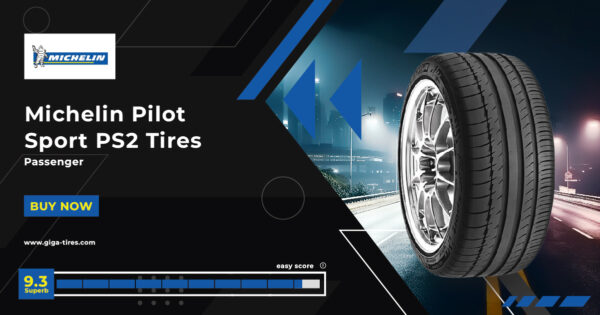
- Bridgestone Potenza S-04 Pole Position
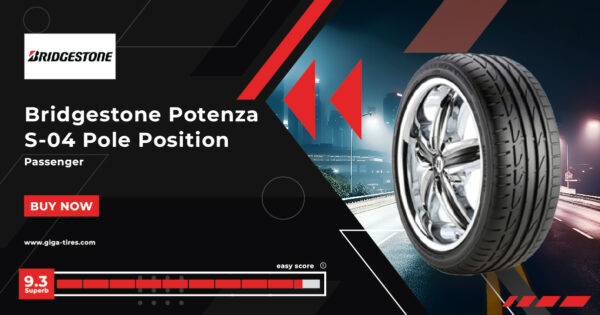
- Pirelli P Zero Nero GT
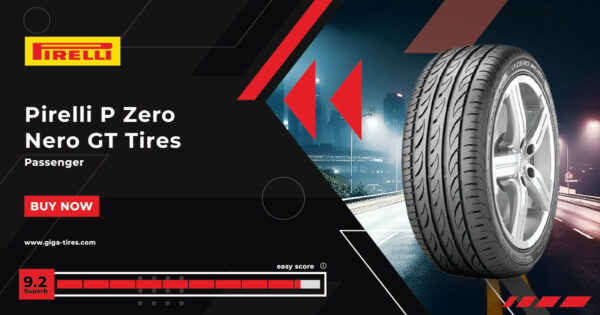
- Continental ExtremeContact Sport
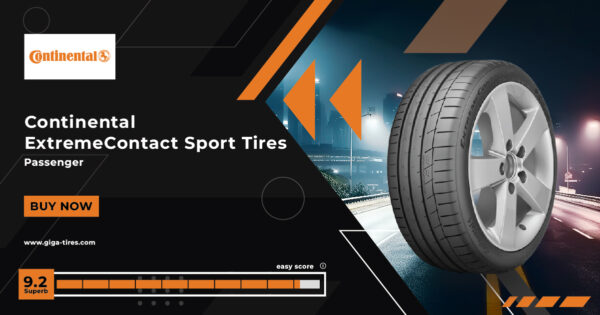
- Goodyear Eagle F1 Asymmetric 3
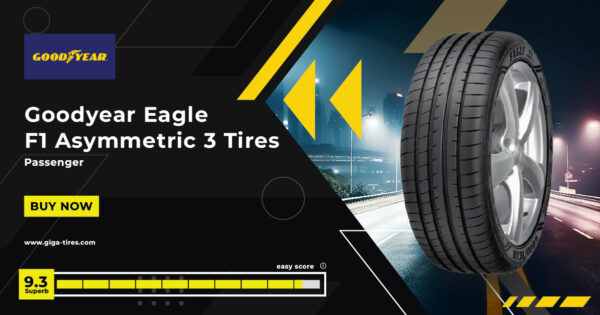
To compare the top-rated asymmetrical tires, let’s examine their key features:
| Tire Model | Wet Traction | Dry Traction | Ride Comfort | Tread Life |
|---|---|---|---|---|
| Michelin Pilot Sport PS2 | Excellent | Exceptional | Very Good | Good |
| Bridgestone Potenza S-04 Pole Position | Very Good | Excellent | Good | Above Average |
| Pirelli P Zero Nero GT | Above Average | Excellent | Good | Above Average |
| Continental ExtremeContact Sport | Very Good | Excellent | Good | Very Good |
| Goodyear Eagle F1 Asymmetric 3 | Good | Very Good | Very Good | Above Average |
When choosing the best asymmetrical tires, you must consider factors such as driving habits, weather patterns in your area, and your vehicle’s specific needs. Exploring top-rated options and comparing their features ensures a confident choice in selecting the perfect set of asymmetrical tires for your car.
Conclusion
In the ever-evolving world of tire technology, asymmetrical tires are a versatile and high-performing option for diverse driving needs. Their unique design caters to wet and dry conditions, making them a desirable choice for consumers seeking reliable performance across various roadways. As explored in this article, the significance of tire choice significantly impacts a vehicle’s overall safety and performance.
Understanding the advantages of asymmetrical tires and the specific driving conditions they excel in is crucial to selecting the right tire for your vehicle. These multitasking tires not only provide superior handling and traction but also have the potential to reduce fuel consumption and minimize noise levels. This combination of benefits has set asymmetrical tires apart from their counterparts, solidifying their reputation in the automotive industry.
As tire technology advances, we can expect innovative designs, such as asymmetrical tires, to remain at the forefront of the industry. Their ability to adapt to the future of tire technology will likely prove essential in meeting the ever-changing demands of modern drivers. In conclusion, when choosing your next set of tires, consider the multifaceted benefits of asymmetrical designs, ensuring optimal performance and safety on the road.
FAQ
What are asymmetrical tires and their unique design?
Asymmetrical tires are designed to optimize performance across different driving conditions. They have distinct inner and outer tread patterns, with the inside geared towards wet traction and handling and the outer side towards dry grip and cornering stability.
How do asymmetrical tires perform in wet conditions?
Asymmetrical tires offer superior performance in wet conditions due to their inner tread, which channels water away, reducing the risk of hydroplaning and ensuring a firm grip on wet surfaces.
How do asymmetrical tires perform on dry roads?
The outer portion of asymmetrical tires provides dependable grip and cornering stability on dry roads, making them well-suited for dry driving environments.
What are some essential considerations for mounting and installing asymmetrical tires?
Asymmetrical tires must be mounted with the correct side facing out and may only be rotated from front to back on the same side of the vehicle. Incorrect installation or mixing different types of tires can negatively affect handling and safety.
How can I maintain my asymmetrical tires and prolong their tread life?
To maximize tread life and maintain performance, asymmetrical tires should be rotated according to specific patterns, usually front to back, on the same side of the vehicle. This ensures balanced wear and longevity.
How do I choose the best asymmetrical tires for my vehicle?
Selecting the best asymmetrical tires involves assessing your driving conditions and vehicle requirements. Consider year-round performance, handling, and the tire’s ability to adapt to wet and dry conditions when choosing.
Are asymmetrical tires suitable for performance vehicles?
Performance vehicles, such as sports and high-performance automobiles, benefit from asymmetrical tires’ superior handling, grip, and cornering stability on dry surfaces.
What are some top-rated asymmetrical tires on the market?
The market offers a variety of top-rated asymmetrical tires, distinguished by their exceptional all-season capabilities, handling, and durability. When searching for the best options, consider reviews, industry ratings, and each brand and model’s specific advantages within the asymmetrical tire category.












